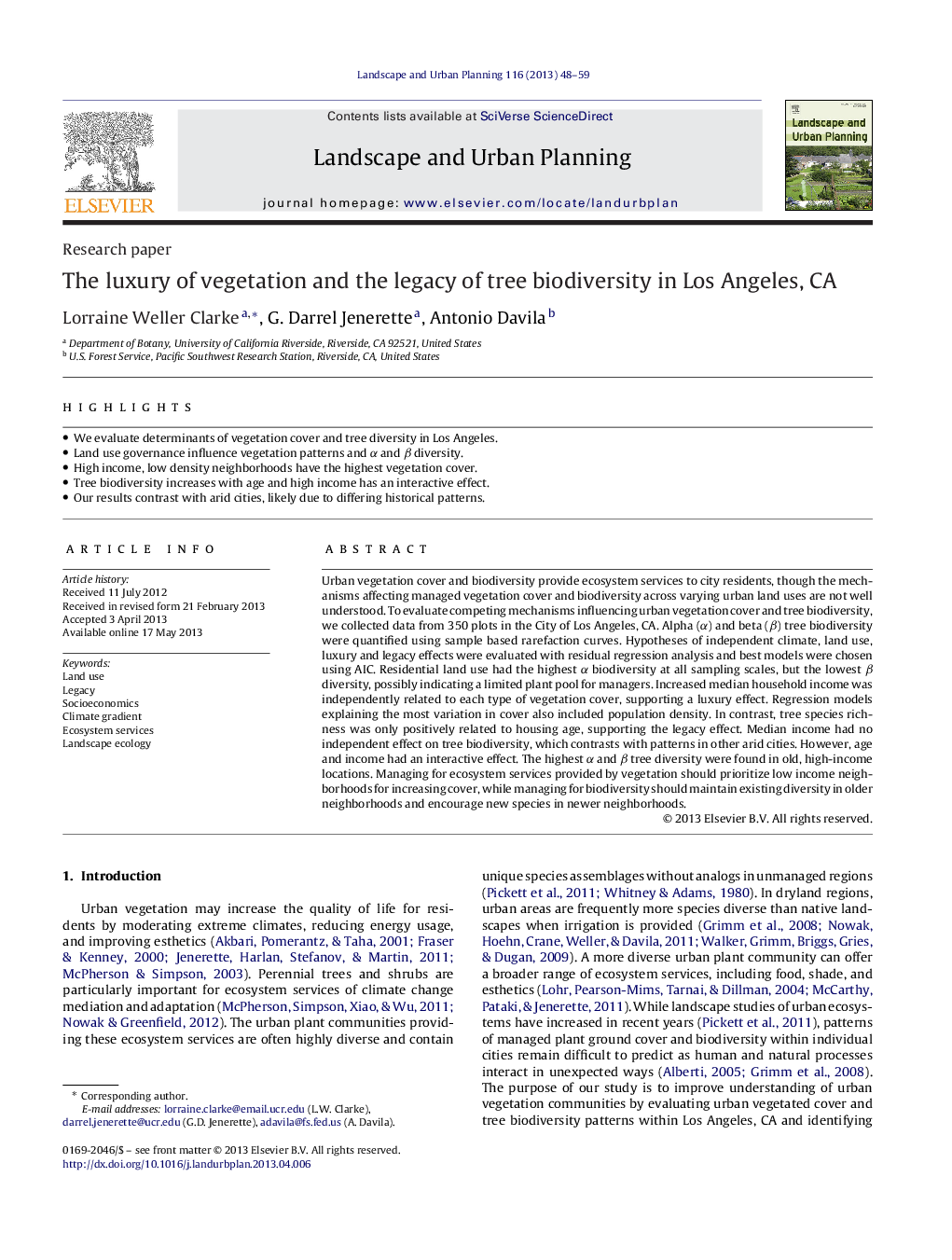| Article ID | Journal | Published Year | Pages | File Type |
|---|---|---|---|---|
| 1049299 | Landscape and Urban Planning | 2013 | 12 Pages |
•We evaluate determinants of vegetation cover and tree diversity in Los Angeles.•Land use governance influence vegetation patterns and α and β diversity.•High income, low density neighborhoods have the highest vegetation cover.•Tree biodiversity increases with age and high income has an interactive effect.•Our results contrast with arid cities, likely due to differing historical patterns.
Urban vegetation cover and biodiversity provide ecosystem services to city residents, though the mechanisms affecting managed vegetation cover and biodiversity across varying urban land uses are not well understood. To evaluate competing mechanisms influencing urban vegetation cover and tree biodiversity, we collected data from 350 plots in the City of Los Angeles, CA. Alpha (α) and beta (β) tree biodiversity were quantified using sample based rarefaction curves. Hypotheses of independent climate, land use, luxury and legacy effects were evaluated with residual regression analysis and best models were chosen using AIC. Residential land use had the highest α biodiversity at all sampling scales, but the lowest β diversity, possibly indicating a limited plant pool for managers. Increased median household income was independently related to each type of vegetation cover, supporting a luxury effect. Regression models explaining the most variation in cover also included population density. In contrast, tree species richness was only positively related to housing age, supporting the legacy effect. Median income had no independent effect on tree biodiversity, which contrasts with patterns in other arid cities. However, age and income had an interactive effect. The highest α and β tree diversity were found in old, high-income locations. Managing for ecosystem services provided by vegetation should prioritize low income neighborhoods for increasing cover, while managing for biodiversity should maintain existing diversity in older neighborhoods and encourage new species in newer neighborhoods.
